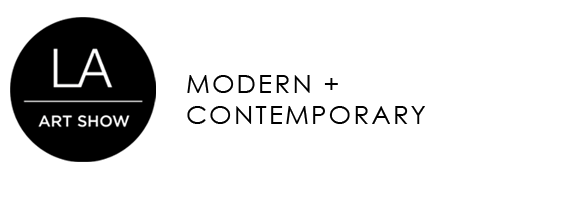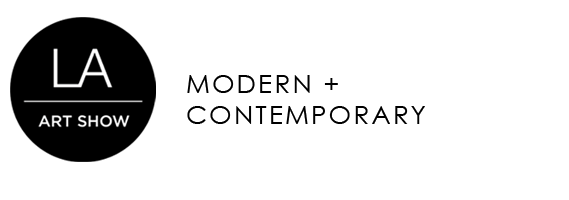The Works of M.C. Escher
Presented by Walker Fine Art
Presented by Walker Fine Art
Exploring the intersection of art, mathematics, science and poetry, Escher’s work has fascinated and astounded generations of artists, architects, mathematicians, musicians and designers alike. Over 40 years, Walker Fine Art has assembled the largest collection of Escher works in the world, and will showcase the “rarest of the rare” at the 25th Annual LA Art Show.
The M.C. Escher experience runs the span of his entire career, and will include rarely seen lithographs, wood cuts, engravings, and mezzotints, as well as the artist’s iconic custom furniture. Many of these will be shown in California for the first time ever. In addition to seeing the artist’s work up close, LA Art Show attendees will have the opportunity to become Escher. A special photo-booth will recreate his iconic sphere self portrait with you in the reflection.
The M.C. Escher experience runs the span of his entire career, and will include rarely seen lithographs, wood cuts, engravings, and mezzotints, as well as the artist’s iconic custom furniture. Many of these will be shown in California for the first time ever. In addition to seeing the artist’s work up close, LA Art Show attendees will have the opportunity to become Escher. A special photo-booth will recreate his iconic sphere self portrait with you in the reflection.
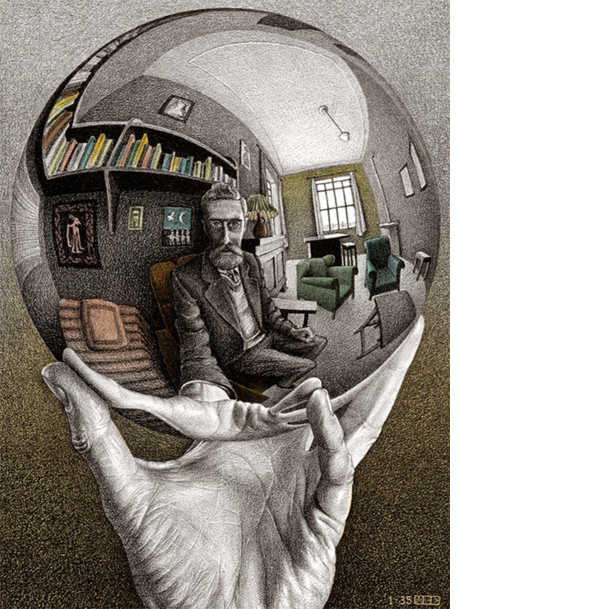
Iconoclasts: Kazu Hiro
Presented by Copro Gallery
Presented by Copro Gallery
KAZU HIRO is a contemporary hyperrealist sculptor living and working in Los Angeles. After working 25 years as a special effects makeup artist in Hollywood, Kazu decisively shifted focus in 2012, dedicating himself semi-full time to fine art sculpture.
Using resin, platinum silicone, and many other materials, Kazu constructs three-dimensional portraits in a scale two times life size. Kazu has received numerous accolades throughout his career including an Academy Awards Oscar in 2018 for his work in the film “Darkest Hour” helping good friend, actor, Gary Oldman to portray Winston Churchill.Kazu Hiro’s newest Hyperreal Portrait Sculpture will be unveiled at the LA Art Show in Copro Gallery’s booth. At the entrance to the show, Kazu is exhibiting a retrospective of several of his past works. There will also be an opportunity for collectors to take photos with each piece – Kazu will be present at scheduled times.
Kazu Hiro won an Oscar for Best Makeup and Hairstyling in Los Angeles over the weekend for his work on the film, Bombshell.
Using resin, platinum silicone, and many other materials, Kazu constructs three-dimensional portraits in a scale two times life size. Kazu has received numerous accolades throughout his career including an Academy Awards Oscar in 2018 for his work in the film “Darkest Hour” helping good friend, actor, Gary Oldman to portray Winston Churchill.Kazu Hiro’s newest Hyperreal Portrait Sculpture will be unveiled at the LA Art Show in Copro Gallery’s booth. At the entrance to the show, Kazu is exhibiting a retrospective of several of his past works. There will also be an opportunity for collectors to take photos with each piece – Kazu will be present at scheduled times.
Kazu Hiro won an Oscar for Best Makeup and Hairstyling in Los Angeles over the weekend for his work on the film, Bombshell.
3.11 Requiem and Revival: Sogen Chiba
Presented by Gallery Kitai
Presented by Gallery Kitai
Sogen Chiba’s 3.11 Requiem and Revival work transcribes newspaper reports of the Great East Japan Earthquake. Chiba created a new work in this series for the current exhibition. Given we are now seven years on from 3/11 our memories of the event are fading. We seek to record the memories of unimaginable disaster, and consider how we can move beyond them. Chiba himself is from the disaster-hit Ishinomaki district, and has used his indomitable spirit to move beyond misfortune and challenge himself to create works and imagery that can only be expressed in calligraphy.
Nine years have passed since The Great East Japan Earthquake and Related Disasters, and while recovery and revitalization continues in the disaster zones, there is also evidence of weathering in these areas. Amidst such circumstances, these works confront face on the question, what can only be expressed through contemporary calligraphy. Chiba himself is a survivor of the disaster, and incorporates strong messages for the people of the disaster zone in these works. His hope is that this exhibition will allow an even wider audience to see, know and feel these works. Chiba’s new work is included here. One direction being taken in avant-garde calligraphy, as seen in this work, is the shedding of the character nature of each character, making each viewer consider the definition of the work itself, is it calligraphy, is it not?
Nine years have passed since The Great East Japan Earthquake and Related Disasters, and while recovery and revitalization continues in the disaster zones, there is also evidence of weathering in these areas. Amidst such circumstances, these works confront face on the question, what can only be expressed through contemporary calligraphy. Chiba himself is a survivor of the disaster, and incorporates strong messages for the people of the disaster zone in these works. His hope is that this exhibition will allow an even wider audience to see, know and feel these works. Chiba’s new work is included here. One direction being taken in avant-garde calligraphy, as seen in this work, is the shedding of the character nature of each character, making each viewer consider the definition of the work itself, is it calligraphy, is it not?
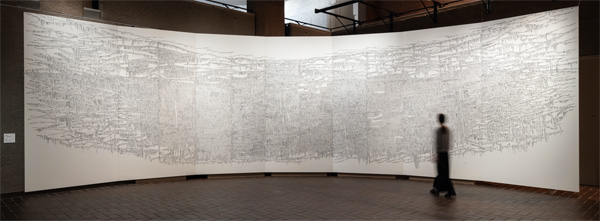
Taylor Camp: Edge of Paradise
Presented by John Wehrheim
Presented by John Wehrheim
In 1969, thirteen Hippies-refugees from campus riots, war protests and police brutality-fled to the remote Hawaiian island of Kauai. Before long this little tribe of men, women and children were arrested and sentenced to ninety days hard labor for having no money and no home. Island resident Howard Taylor, brother of actress Elizabeth, bailed out the group and invited them to camp on his vacant ocean front land-then left them on their own, without any restrictions, regulations or supervision. Soon waves of hippies, surfers and troubled Vietnam vets found their way to this clothing-optional, pot-friendly tree house village at the end of the road on the Island’s North Shore. In 1977, the government condemned the village to make way for a State park. Within a few years the jungle reclaimed Taylor Camp, leaving little but ashes and memories of “the best days of our lives.” John Wehrheim’s 1970s photographs reveal a community that created order without rules and rejected materialism for the healing power of nature.
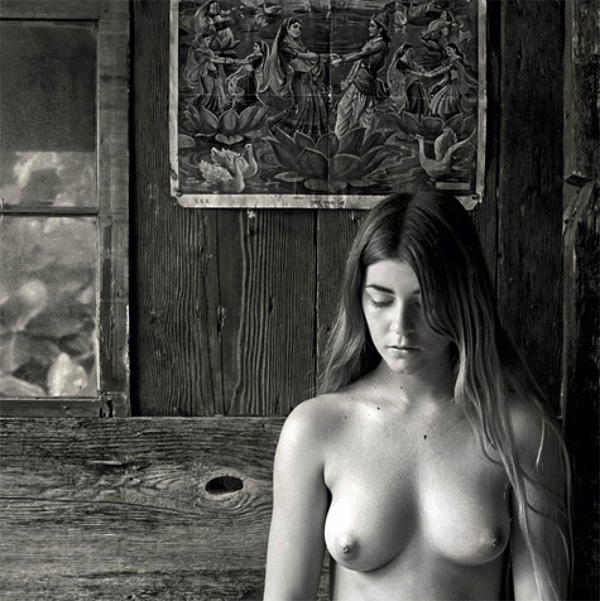
Karma: The Image of the Moon-Jar as the Epitome of Life: Choi Young Wook
Presented by SM Fine Art Gallery
Presented by SM Fine Art Gallery
Choi Young Wook has been painting the Chosun’s moon-jar for quite a number of years. The image of the moon-jar almost fills up the whole canvas, which at a glance, looks as if the painter executed it using a hyperrealistic technique. This is why some viewers or critics are quick to categorize his work as hyperrealism, but this interpretation is wrong. His work is not an objective representation of the image in a hyperrealistic style, but is rather, inclined to be subjective. The depiction of the image of the moon-jar is merely dressed in the style of figurative description. The only critical criterion that is summoned to interpreting his work as hyperrealistic is the reference to the description of the surface cracks on the pot, and this stems from the misunderstanding that the image of hairline cracks on the glazed porcelain surface represents the real fissure on the surface.
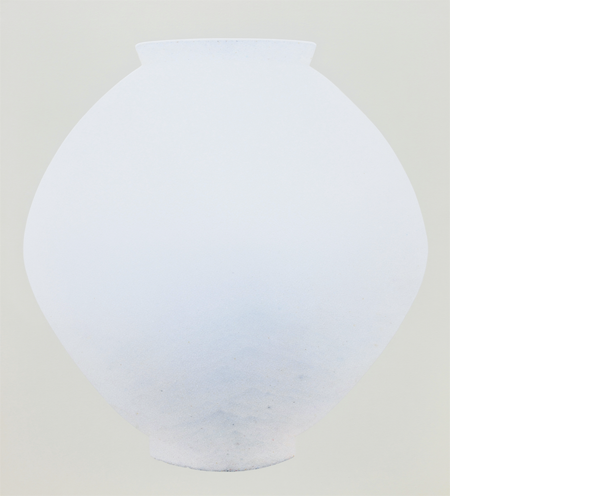
Of Aesthetics & The Vernacular: Baua Devi (Master Artist of Mithila Painting)
Presented by Arushi Arts / New Delhi / Los Angeles
Presented by Arushi Arts / New Delhi / Los Angeles
This exhibition will showcase works by Baua Devi, a master artist of the Mithila or Madhubani style of painting in India. The Madhubani painting tradition played a key role in environmental conservation efforts in India in 2012, where there was frequent deforestation in the state of Bihar. Local trees were being cut down in the name of development. The main reason for the conservation effort was that the trees are traditionally adorned with the forms of gods and other religious and spiritual images. This recognition of the cultural and aesthetic significance of the trees saved them from being cut down. Madhubani paintings mostly depict people and their association with nature as well as scenes and deities from the ancient epics. Generally, no space is left empty; the gaps are filled by paintings of flowers, animals, birds, and even geometric designs.
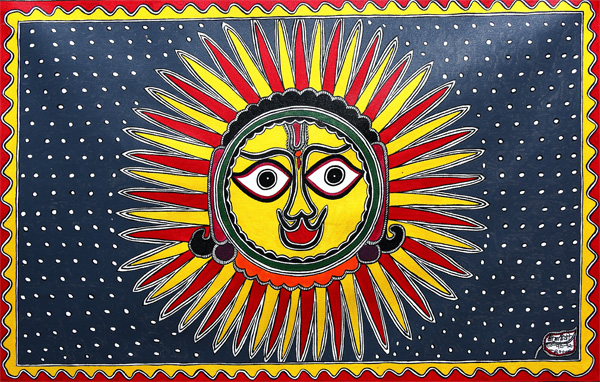
The Maize Project: Eric Johnson
Presented by Fabrik Projects
Presented by Fabrik Projects
The “Maize Project” abstractly represents a lodge pole-like structure. In the Native American culture, the lodge pole is a gathering place and the title and shape of the sculpture reference a section of an ear of maize corn. For Johnson, this alludes to his Native American heritage and also is a call to raise awareness to issues of global hunger, alternative fuel, and corn’s complicated relationship to our food supply. The piece is assembled from more than 300 individually cast polyester resin units — “kernels”, as he calls them. The kernels were made in Johnson’s studio with various artists, friends and community members in assistance. The communal project took several years to complete. Participants were invited to select resin colors, sequencing of pours, and encase small objects or messages into the kernels. Customization ranges from the light hearted (candy corn) to the profound (baby teeth of a lost child).
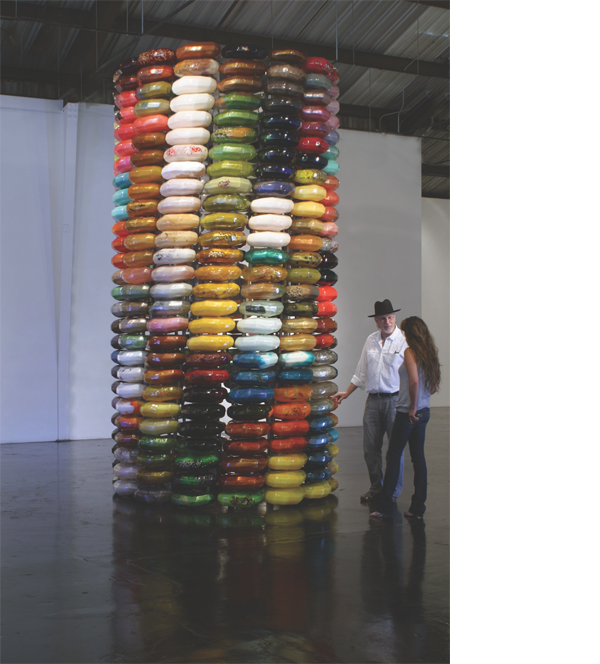
ALPHACUBE: Lorenzo Marini
Presented by Bruce Lurie Gallery
Presented by Bruce Lurie Gallery
ALPHACUBE is the new art project from Lorenzo Marini curated by Sabino Maria Frassà. With ALPHACUBE, the artist literally upends the contemporary art paradigm of the white cube as the best form for conveying its use and comprehension. Lorenzo Marini turns that paradigm on its head and makes the “white cube” the housing, the outside of the artwork. The work is contained completely inside the cube, delineating a new, immersive space animated by artistic brilliance. ALPHACUBE rises in space like something alien, as much in form as in content: while it is obvious that the artist has a certain fascination for Dadaism and Futurism, which he reinterprets and actualizes, it also cannot be denied that the focus of the installation is not an aesthetic satisfaction but a social and cultural stimulus.
The formal result is therefore a fascinating and – we might as well admit it – extremely attractive and seductive installation, which literally hides “inside it” a criticism of how we communicate and interact today: too-much-information that sweeps away communication, for which language itself was born.
The formal result is therefore a fascinating and – we might as well admit it – extremely attractive and seductive installation, which literally hides “inside it” a criticism of how we communicate and interact today: too-much-information that sweeps away communication, for which language itself was born.
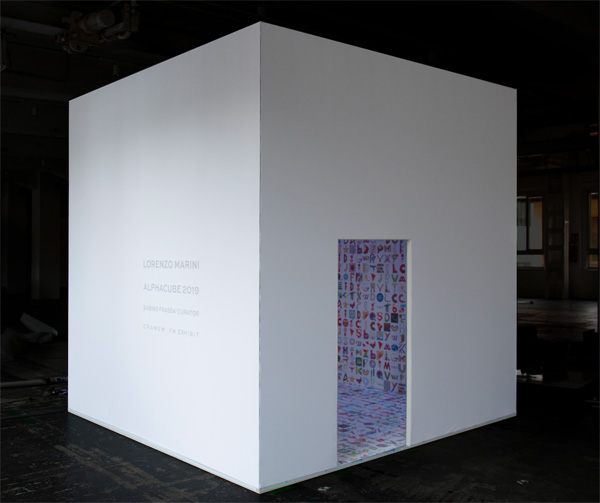
Happening: Ryan Schude
Presented by bG Gallery
Presented by bG Gallery
A special exhibit booth of photographs by Ryan Schude. Schude is known for his large-scale, single-frame tableaux that are packed with sophisticated action – mingling surrealism and Americana with a touch of contemporary humor. In this latest body of work, Schude’s subjects intermingle with monumental exterior environments. Often viewed from a heightened perspective, forces of nature become part of each character’s open narrative.
Schude has been featured internationally and nationally in exhibits and publications including the cover of the Smithonian magazine’s Norman Rockwell edition. Recently he collaborated with Laura Miner on a Tableau Vivant for the San Francisco Museum of Modern Art which highlighted the employees and their artwork created outside the museum as the subjects of the narrative. This project is part of a larger series involving photographs of individuals in institutions as a documentation of a ‘Happening’ in the photographic process.
Schude has been featured internationally and nationally in exhibits and publications including the cover of the Smithonian magazine’s Norman Rockwell edition. Recently he collaborated with Laura Miner on a Tableau Vivant for the San Francisco Museum of Modern Art which highlighted the employees and their artwork created outside the museum as the subjects of the narrative. This project is part of a larger series involving photographs of individuals in institutions as a documentation of a ‘Happening’ in the photographic process.
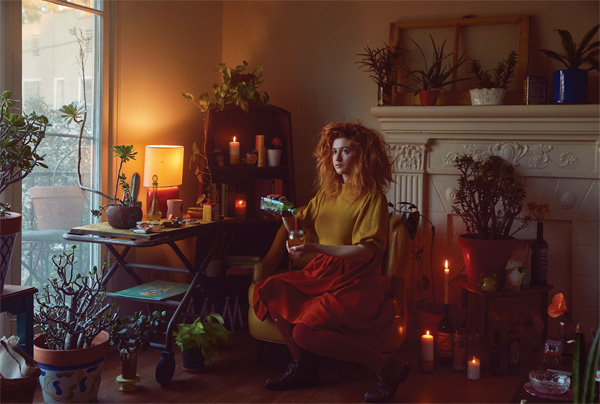
2019
Grandmother’s Country: Gabriella Possum Nungurrayi
Presented by Australian Aboriginal Art Gallery
Presented by Australian Aboriginal Art Gallery
Women are the principle gatherers of Bush Tucker and it is an important part of everyday life within the family clan. This particular painting, Grandmother’s Country, depicts women collecting food and also celebrates the fertility of the land. Aboriginal paintings are based on the myths of the Dreamtime. In modern dot representations, the sacred aspect of the painting is not always revealed, but the meaning remains, transmitted through symbols that are easily understood.
Each person has a particular Dreaming to which they belong and they have special ceremonial dances and songs that combine together to form a unique belief that makes up the lives of the Aboriginal people. All things relate to the land and thus the land is of great importance to them. The land is the keeper of the Dreaming and must be kept safe for all time so that the Dreaming stories, which are told in the paintings, can be preserved. Gabriella Possum Nungarrayi is one of Australia’s premier female Aboriginal artists from the Central Desert who is currently working in Melbourne. At an early age, Gabriella began painting alongside her father the renowned, Clifford Possum Tjapaltjarri, whose works are represented in major galleries and private collections worldwide. He passed on his skills to his daughter, whose paintings reflect his unique style.
Gabriella Possum Nungarrayi is one of Australia’s premier female Aboriginal artists from the Central Desert who is currently working in Melbourne. At an early age, Gabriella began painting alongside her father the renowned, Clifford Possum Tjapaltjarri, whose works are represented in major galleries and private collections worldwide. He passed on his skills to his daughter, whose paintings reflect his unique style.
Each person has a particular Dreaming to which they belong and they have special ceremonial dances and songs that combine together to form a unique belief that makes up the lives of the Aboriginal people. All things relate to the land and thus the land is of great importance to them. The land is the keeper of the Dreaming and must be kept safe for all time so that the Dreaming stories, which are told in the paintings, can be preserved. Gabriella Possum Nungarrayi is one of Australia’s premier female Aboriginal artists from the Central Desert who is currently working in Melbourne. At an early age, Gabriella began painting alongside her father the renowned, Clifford Possum Tjapaltjarri, whose works are represented in major galleries and private collections worldwide. He passed on his skills to his daughter, whose paintings reflect his unique style.
Gabriella Possum Nungarrayi is one of Australia’s premier female Aboriginal artists from the Central Desert who is currently working in Melbourne. At an early age, Gabriella began painting alongside her father the renowned, Clifford Possum Tjapaltjarri, whose works are represented in major galleries and private collections worldwide. He passed on his skills to his daughter, whose paintings reflect his unique style.
Read More
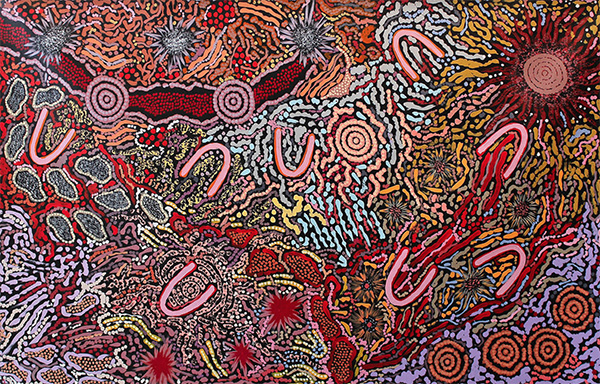
Chinese Contemporary Ink Art: Ten Leading Artists
Presented by Michael Goedhuis
Presented by Michael Goedhuis
Michael Goedhuis will be exhibiting the ten best contemporary ink painters from China.
The exhibition will describe, through the works of these ten leading artists, how Chinese contemporary culture is being transformed via a profound understanding of Chinese historical civilization. Gu Wenda, Li Huayi, Li Xubai, Liu Dan, Lo Ch’ing, Qin Feng, Qiu Deshu, Tai Xiangzhou, Wang Dongling and Wei Ligang are creating a new pictorial language which expresses the fundamentals of Chinese aesthetics and culture in ways which are relevant to today’s society in China and also to the developments in the West.
Ink paintings emerged 1000 years ago from calligraphy: the sublime and central achievement of China. Calligraphy is executed in ink on silk or paper, with a brush. In order to master this brush on the absorbent paper, which tolerates no error or correction, the artist has to achieve a high degree of concentration, balance and control. Painting is an extension of the art of calligraphy. It is therefore, like calligraphy, linked to the sacred prestige of the written word.
The exhibition will describe, through the works of these ten leading artists, how Chinese contemporary culture is being transformed via a profound understanding of Chinese historical civilization. Gu Wenda, Li Huayi, Li Xubai, Liu Dan, Lo Ch’ing, Qin Feng, Qiu Deshu, Tai Xiangzhou, Wang Dongling and Wei Ligang are creating a new pictorial language which expresses the fundamentals of Chinese aesthetics and culture in ways which are relevant to today’s society in China and also to the developments in the West.
Ink paintings emerged 1000 years ago from calligraphy: the sublime and central achievement of China. Calligraphy is executed in ink on silk or paper, with a brush. In order to master this brush on the absorbent paper, which tolerates no error or correction, the artist has to achieve a high degree of concentration, balance and control. Painting is an extension of the art of calligraphy. It is therefore, like calligraphy, linked to the sacred prestige of the written word.
Read More
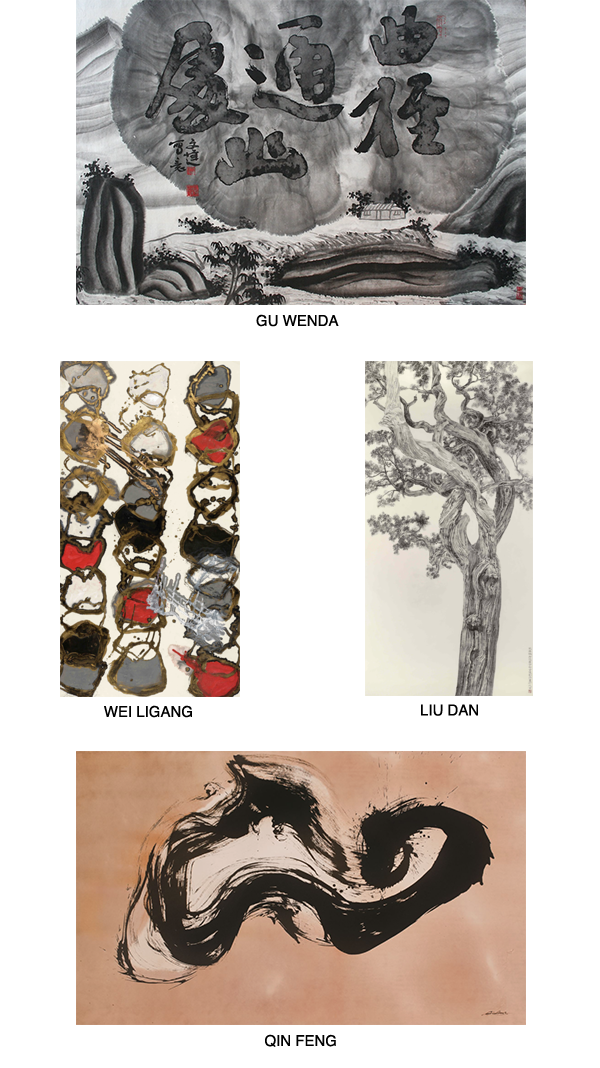
Shark: RISK
Presented by 5Art Gallery
Presented by 5Art Gallery
Beloved LA graffiti artist RISK makes his LA Art Show debut with two sculptures from his ongoing “Shark” series that has evolved to explore predators in their many forms. One of the most talked about sculptures of 2018 was his bisected police cruiser, an actual cop car dipped in formaldehyde and sliced open “like bacon,” revealing the vehicle’s inner workings. For the show, this controversial piece will be juxtaposed with a similar sculpture of a shark comprised of spare machine parts. Inspired by Damien Hirst’s “Natural History,” the pairing is a commentary on how police “patrol the hood like sharks.” “Embrace what you fear” is an idea that stems from Buddhist teachings and RISK’s bisected cop car was the surprise outcome of a meditation on this principle.
The project actually began as a sculpture of a shark and metamorphosed into a different kind of predator, complete with its own version of telltale fins, shape and color palette. Across from it will be the finished sculpture of the shark he originally intended to create – a predator from a different era that still strikes just as much fear.
The project actually began as a sculpture of a shark and metamorphosed into a different kind of predator, complete with its own version of telltale fins, shape and color palette. Across from it will be the finished sculpture of the shark he originally intended to create – a predator from a different era that still strikes just as much fear.
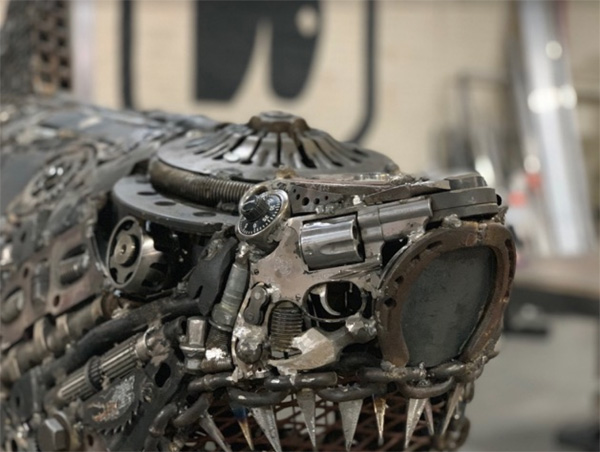
Black Landscape: Chuni Park
Presented by Baik Art
Presented by Baik Art
Inspired by natural landscapes, Chuni Park recreates abstract paintings from memory of the places he’s explored and populates them with a cast of symbolic, often recurring characters.
Featured will be Park’s large-scale, multi-panel installation, Black Landscape, which draws the seasons in black ink derived from pine soot.
In the months leading up to the LA Art Show, Park is also traveling through California and the American West, visiting national parks like Yosemite for inspiration. He will be premiering several new pieces inspired by his exploration of the Southwest, joining iconic landscape artists like Hockney who have tackled similar subject matter. This will be Park’s first time depicting American landscapes – opening a whole new world for his work and starting a new chapter in his creative career.
Featured will be Park’s large-scale, multi-panel installation, Black Landscape, which draws the seasons in black ink derived from pine soot.
In the months leading up to the LA Art Show, Park is also traveling through California and the American West, visiting national parks like Yosemite for inspiration. He will be premiering several new pieces inspired by his exploration of the Southwest, joining iconic landscape artists like Hockney who have tackled similar subject matter. This will be Park’s first time depicting American landscapes – opening a whole new world for his work and starting a new chapter in his creative career.

The Best Days of your Life, an Atlas: Scott Hove
Presented by Art All Ways
Presented by Art All Ways
Scott Hove returns to LA Art Show this year with this museum-scale wall installation, “The Best Days of Your Life, an Atlas”. Formerly known for the first large scale archway at Littletopia, and then for his widely acclaimed cake-themed mirror infinity chamber, Hove is presenting a more detailed and crafted wall piece that will illuminate minds and the immediate space.
For this sculpture, he has used a more painterly approach to composition, and has applied multiple illumination points to provide a sense of radiant heat and fantastical texture to engage viewers in a very active way. The 36 gallons of acrylic “frosting” create a compelling illusion of imminent satisfaction, and a re-imagined and idealized contextualization of personal memory. For much of Hove’s work, artifice serves as a medium to support a fantasy narrative that can seem at once safe and inviting, and then questionable and menacing.
Scott currently lives and works in Los Angeles.
For this sculpture, he has used a more painterly approach to composition, and has applied multiple illumination points to provide a sense of radiant heat and fantastical texture to engage viewers in a very active way. The 36 gallons of acrylic “frosting” create a compelling illusion of imminent satisfaction, and a re-imagined and idealized contextualization of personal memory. For much of Hove’s work, artifice serves as a medium to support a fantasy narrative that can seem at once safe and inviting, and then questionable and menacing.
Scott currently lives and works in Los Angeles.
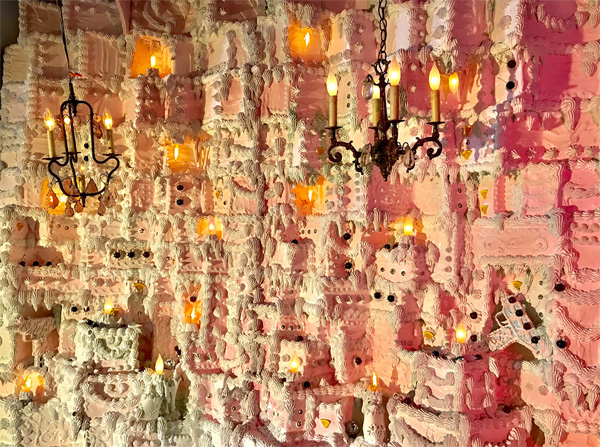
2018
Dansaekhwa IV: Internal Rhythm – Kim Tae-Ho
Curated by Simon Kwon
Presented by SM Fine Art Gallery
Curated by Simon Kwon
Presented by SM Fine Art Gallery
Development of Kim Tae-Ho’s most recent works coincided with the turning of the millennium, about the year 2000. Focusing on brush strokes and the application of color, for the most part, these works appear to be vastly different from his previous works.
Above all, concerning the changing of appearance, thick layers of paint form bulky masses, which clearly diverge from his previous two-dimensional illusionary pieces. Simultaneously there are differences in physicality, and they differ uniquely from the full compositions of his paper works. Regarding the process, he first draws interwoven lines. He creates a fixed rhythm, and after building up twenty layers of paint, he then scrapes away the dense accumulation of paint. Color that is hidden beneath rhythmically comes alive within the structure. Countless visual spaces are constructed within the overlapping grid formation; each cell is comparable to a beehive, producing its own life in the realm of painting.
Above all, concerning the changing of appearance, thick layers of paint form bulky masses, which clearly diverge from his previous two-dimensional illusionary pieces. Simultaneously there are differences in physicality, and they differ uniquely from the full compositions of his paper works. Regarding the process, he first draws interwoven lines. He creates a fixed rhythm, and after building up twenty layers of paint, he then scrapes away the dense accumulation of paint. Color that is hidden beneath rhythmically comes alive within the structure. Countless visual spaces are constructed within the overlapping grid formation; each cell is comparable to a beehive, producing its own life in the realm of painting.
Read More
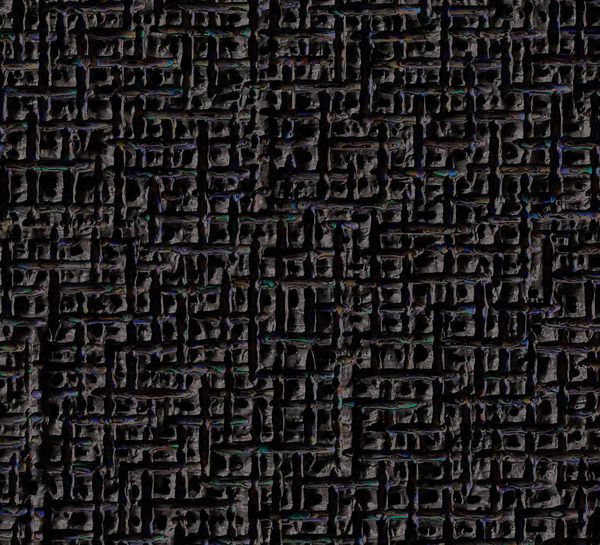
Director’s Chair: Matthew Modine
Presented by Axiom Contemporary Gallery
Presented by Axiom Contemporary Gallery
On the 30th anniversary of Stanley Kubrick’s Full Metal Jacket, Matthew Modine’s “Full Metal Diary” offers an incredibly rare and vibrant portrait of one of cinema’s most iconic war films – by one of the industry’s most enigmatic directors. The exhibition is a study of a young actor under the apprenticeship of a legend.
A combination of rarely seen, medium-format photographs taken on set are displayed alongside poetic, intimate excerpts from the actor’s personal diary. This glance behind-the-curtain reveals unique insights into Kubrick’s methodology as well as the complicated process of an actor struggling to come to terms with his craft. “Full Metal Diary” is an extraordinary example of art imitating life.
A combination of rarely seen, medium-format photographs taken on set are displayed alongside poetic, intimate excerpts from the actor’s personal diary. This glance behind-the-curtain reveals unique insights into Kubrick’s methodology as well as the complicated process of an actor struggling to come to terms with his craft. “Full Metal Diary” is an extraordinary example of art imitating life.
Show More
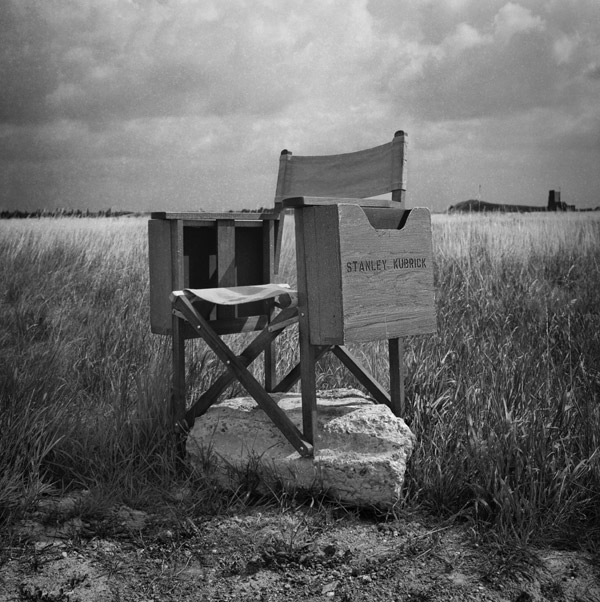
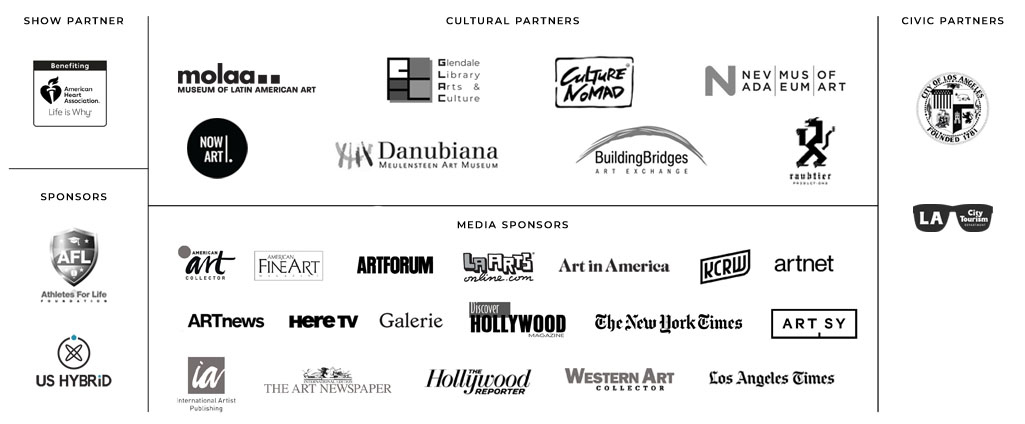 |
|
